Do you have a question about the Toyota 4Runner 2003 and is the answer not in the manual?
Explains the meaning of warning lights and indicator symbols on the dashboard.
Covers operation and adjustment of seats, seat belts, steering wheel, and mirrors.
Covers the operation of various lights, wipers, and defogger systems.
Overview of dashboard gauges, meters, and service reminder indicators.
Covers ignition switch, transmission operation, and parking brake.
Overview of the car audio system, including basic features and controls.
Overview of the air conditioning system and its controls.
Details the types of keys, their functions, and precautions for use.
Explains how to operate headlights and turn signals, including automatic controls.
Explains the fuel gauge, its operation, and the low fuel level warning light.
Details on ignition switch positions, steering lock, and related warnings.
Details of controls for the air conditioning system without a dual zone feature.
Details on the engine coolant temperature gauge and what the red zone indicates.
Explains the operation of the 5-speed automatic transmission and selector lever.
How to turn the audio system on/off and switch between functions.
Instructions for adjusting power front seats, including position, back angle, and lumbar support.
Details on ABS, VSC TRAC, and other warning lights and their actions.
Explanation of the brake system warning light and buzzer conditions.
How to turn the air conditioning on/off and what a flashing indicator means.
Explains the operation of the 4-speed automatic transmission and selector lever.
Details of air conditioning controls, including dual zone operation.
Using the AUTO button for automatic AC operation and manual overrides.
What the low engine oil pressure warning light signifies and actions to take.
Information on seat belts, including precautions and usage.
Details on the malfunction indicator lamp, its causes, and what to do.
Details on the full-time four-wheel drive system and control knob.
Setting independent temperatures for driver and passenger seats.
Explains the operation of the four-wheel drive control system.
Further precautions on seat belt usage, including for children and pregnant women.
Instructions on operating windshield wipers and washer fluid.
Important safety advice on positioning the shoulder belt correctly.
Conditions causing the ABS warning light to stay on or come on while driving.
Overview of the multi-mode four-wheel drive system and controls.
What the VSC TRAC warning light indicates and related system functions.
Explains the operation of the multi-mode control switch and center differential lock.
Details on H2, H4 (unlocked/locked), and L4 (unlocked/locked) modes.
Function of the SRS warning light and what it monitors.
Procedures for shifting between H2/H4 and H4/L4 modes.
Explanation of how front seat belt pretensioners work and are activated.
Significance of the automatic transmission fluid temperature warning light.
Explains the traction control system and its normal driving mode.
How to turn off and on the traction control system and the TRAC OFF indicator light.
Details on the active traction control system for 4-wheel drive models.
Explanation of the VSC TRAC warning light and its relation to other systems.
Overview of the vehicle stability control system and its integrated functions.
Indicator lights related to vehicle stability control and center differential lock.
Explains the downhill assist control system for engine braking on steep hills.
Steps to activate the downhill assist control system for various models.
How the downhill assist control system operates and its indicator lights.
What the VSC TRAC warning light indicates regarding downhill assist control.
Details on using audio system controls mounted on the steering wheel.
Details on how the hill-start assist control system operates and its limitations.
Information on the rear height control air suspension and its modes.
Operation of the track/seek switch for radio, cassette, and CD player.
Information on the rear seat audio system and its operation.
How to operate the rear seat audio system using the controller.
How to use the rear seat audio system controller to direct signal output.
How to turn off the rear height control air suspension and related precautions.
Details of controller buttons: DISC/CH/PROG, TUNE/TRACK, ON/SOURCE, OFF.
Instructions on how to set and release the parking brake.
Explanation of how to operate the cruise control system.
Skipping tracks or chapters, scanning discs, and using ON/SOURCE and OFF buttons.
Steps for setting a desired speed for cruise control.
Troubleshooting steps for cruise control failure warnings.
Explains the function and safety aspects of SRS driver and front passenger airbags.
Precautions regarding airbag deployment force and occupant positioning.
Safety advice for children regarding airbags and proper seating.
Information on the function and safety of side and curtain shield airbags.
Explains how side and curtain shield airbags work and when they deploy.
Precautions for SRS side and curtain shield airbags, including occupant safety.
Warnings about attaching objects near airbag deployment zones.
Guidelines and precautions for using child restraint systems.
Important precautions for installing and using child restraint systems.
Detailed instructions and warnings for child restraint systems, including airbag interaction.
Detailed steps for installing infant seats with lap and shoulder belts.
Further instructions for convertible seat installation, including airbag and seat interference.
Precautions and steps for installing booster seats, including airbag and child safety.
Precautions and safety advice for driving the vehicle off-road.
Safety cautions related to engine exhaust, including carbon monoxide.
Explains normal engine oil consumption and factors affecting it.
Overview of the brake system's hydraulic circuits and warning lights.
More on ABS operation, pedal feel, and activation conditions.
Important precautions for safely stowing luggage and cargo in the vehicle.
Procedure for starting the engine, including cranking hold function.
Normal starting procedure and what to do if the engine stalls or won't start.
Precautions for driving off-road to ensure safety and prevent area closures.
Details on weight limits, hitch types, and trailer weight distribution.
More trailer towing tips, including crosswinds, passing, and parking on slopes.
Tips for improving fuel economy and extending vehicle life.
Procedure to follow if the engine stalls while the vehicle is in motion.
Procedure to follow if the engine coolant temperature gauge indicates overheating.
Instructions on how to change a flat tire, including safety precautions.
What to do if your vehicle gets stuck in snow, mud, or sand.
Recommendations for towing the vehicle, including methods and consultation.
Emergency towing procedures and cautions.
What to do if the selector lever cannot be shifted out of Park.
What to do if you lose your keys, including obtaining new keys.
Steps to take if you lose your wireless remote control transmitter.
Common causes of corrosion and how to prevent it.
Details on maintenance requirements and owner responsibilities.
Clues that indicate your vehicle may need service or repair.
Location of fuses in the engine compartment and instrument panel.
General precautions for performing do-it-yourself maintenance.
Safety precautions when working with batteries, including acid and gas hazards.
Instructions for checking and adding engine oil.
How to check and add engine coolant, including type selection.
Instructions for checking and refilling brake fluid.
Instructions for checking tire pressure and the consequences of incorrect pressure.
How to check tires for wear and damage, and when to replace them.
How to check the battery's condition using indicators and exterior checks.
Precautions to take when recharging the vehicle battery.
Detailed instructions for checking and replacing fuses.
Engine model, type, bore, stroke, and displacement details.
Engine specifications including valve clearance, spark plug type, and gap.
Automatic transmission fluid capacity, type, and change recommendations.
Brake specifications including pedal clearance, free play, and wear limits.
Tire sizes, pressures, and wheel sizes.
Fuse types and locations in the engine compartment.
List of fuses in type A configuration and the circuits they control.
List of fuses in type B configuration and the circuits they control.
Detailed steps for reporting vehicle safety defects to NHTSA and Toyota.
Summary of Federal and California Emission Control Warranties.
Details of the Basic Warranty and Powertrain Warranty coverage.
Details on Emission Defect and Performance Warranties for federal standards.
Owner's responsibility for required maintenance and warranty implications.
Explanation of the emission control system warranty for California vehicles.
Owner's responsibility for maintenance and presenting the vehicle for warranty repairs.
Warranty exclusions related to replacement parts and improper maintenance.
List of parts covered under the long-term emission defect warranty.
Owner's responsibility for vehicle operation and maintenance.
How to obtain warranty service in the US, its territories, Canada, and outside these areas.
Explains the meaning of warning lights and indicator symbols on the dashboard.
Covers operation and adjustment of seats, seat belts, steering wheel, and mirrors.
Covers the operation of various lights, wipers, and defogger systems.
Overview of dashboard gauges, meters, and service reminder indicators.
Covers ignition switch, transmission operation, and parking brake.
Overview of the car audio system, including basic features and controls.
Overview of the air conditioning system and its controls.
Details the types of keys, their functions, and precautions for use.
Explains how to operate headlights and turn signals, including automatic controls.
Explains the fuel gauge, its operation, and the low fuel level warning light.
Details on ignition switch positions, steering lock, and related warnings.
Details of controls for the air conditioning system without a dual zone feature.
Details on the engine coolant temperature gauge and what the red zone indicates.
Explains the operation of the 5-speed automatic transmission and selector lever.
How to turn the audio system on/off and switch between functions.
Instructions for adjusting power front seats, including position, back angle, and lumbar support.
Details on ABS, VSC TRAC, and other warning lights and their actions.
Explanation of the brake system warning light and buzzer conditions.
How to turn the air conditioning on/off and what a flashing indicator means.
Explains the operation of the 4-speed automatic transmission and selector lever.
Details of air conditioning controls, including dual zone operation.
Using the AUTO button for automatic AC operation and manual overrides.
What the low engine oil pressure warning light signifies and actions to take.
Information on seat belts, including precautions and usage.
Details on the malfunction indicator lamp, its causes, and what to do.
Details on the full-time four-wheel drive system and control knob.
Setting independent temperatures for driver and passenger seats.
Explains the operation of the four-wheel drive control system.
Further precautions on seat belt usage, including for children and pregnant women.
Instructions on operating windshield wipers and washer fluid.
Important safety advice on positioning the shoulder belt correctly.
Conditions causing the ABS warning light to stay on or come on while driving.
Overview of the multi-mode four-wheel drive system and controls.
What the VSC TRAC warning light indicates and related system functions.
Explains the operation of the multi-mode control switch and center differential lock.
Details on H2, H4 (unlocked/locked), and L4 (unlocked/locked) modes.
Function of the SRS warning light and what it monitors.
Procedures for shifting between H2/H4 and H4/L4 modes.
Explanation of how front seat belt pretensioners work and are activated.
Significance of the automatic transmission fluid temperature warning light.
Explains the traction control system and its normal driving mode.
How to turn off and on the traction control system and the TRAC OFF indicator light.
Details on the active traction control system for 4-wheel drive models.
Explanation of the VSC TRAC warning light and its relation to other systems.
Overview of the vehicle stability control system and its integrated functions.
Indicator lights related to vehicle stability control and center differential lock.
Explains the downhill assist control system for engine braking on steep hills.
Steps to activate the downhill assist control system for various models.
How the downhill assist control system operates and its indicator lights.
What the VSC TRAC warning light indicates regarding downhill assist control.
Details on using audio system controls mounted on the steering wheel.
Details on how the hill-start assist control system operates and its limitations.
Information on the rear height control air suspension and its modes.
Operation of the track/seek switch for radio, cassette, and CD player.
Information on the rear seat audio system and its operation.
How to operate the rear seat audio system using the controller.
How to use the rear seat audio system controller to direct signal output.
How to turn off the rear height control air suspension and related precautions.
Details of controller buttons: DISC/CH/PROG, TUNE/TRACK, ON/SOURCE, OFF.
Instructions on how to set and release the parking brake.
Explanation of how to operate the cruise control system.
Skipping tracks or chapters, scanning discs, and using ON/SOURCE and OFF buttons.
Steps for setting a desired speed for cruise control.
Troubleshooting steps for cruise control failure warnings.
Explains the function and safety aspects of SRS driver and front passenger airbags.
Precautions regarding airbag deployment force and occupant positioning.
Safety advice for children regarding airbags and proper seating.
Information on the function and safety of side and curtain shield airbags.
Explains how side and curtain shield airbags work and when they deploy.
Precautions for SRS side and curtain shield airbags, including occupant safety.
Warnings about attaching objects near airbag deployment zones.
Guidelines and precautions for using child restraint systems.
Important precautions for installing and using child restraint systems.
Detailed instructions and warnings for child restraint systems, including airbag interaction.
Detailed steps for installing infant seats with lap and shoulder belts.
Further instructions for convertible seat installation, including airbag and seat interference.
Precautions and steps for installing booster seats, including airbag and child safety.
Precautions and safety advice for driving the vehicle off-road.
Safety cautions related to engine exhaust, including carbon monoxide.
Explains normal engine oil consumption and factors affecting it.
Overview of the brake system's hydraulic circuits and warning lights.
More on ABS operation, pedal feel, and activation conditions.
Important precautions for safely stowing luggage and cargo in the vehicle.
Procedure for starting the engine, including cranking hold function.
Normal starting procedure and what to do if the engine stalls or won't start.
Precautions for driving off-road to ensure safety and prevent area closures.
Details on weight limits, hitch types, and trailer weight distribution.
More trailer towing tips, including crosswinds, passing, and parking on slopes.
Tips for improving fuel economy and extending vehicle life.
Procedure to follow if the engine stalls while the vehicle is in motion.
Procedure to follow if the engine coolant temperature gauge indicates overheating.
Instructions on how to change a flat tire, including safety precautions.
What to do if your vehicle gets stuck in snow, mud, or sand.
Recommendations for towing the vehicle, including methods and consultation.
Emergency towing procedures and cautions.
What to do if the selector lever cannot be shifted out of Park.
What to do if you lose your keys, including obtaining new keys.
Steps to take if you lose your wireless remote control transmitter.
Common causes of corrosion and how to prevent it.
Details on maintenance requirements and owner responsibilities.
Clues that indicate your vehicle may need service or repair.
Location of fuses in the engine compartment and instrument panel.
General precautions for performing do-it-yourself maintenance.
Safety precautions when working with batteries, including acid and gas hazards.
Instructions for checking and adding engine oil.
How to check and add engine coolant, including type selection.
Instructions for checking and refilling brake fluid.
Instructions for checking tire pressure and the consequences of incorrect pressure.
How to check tires for wear and damage, and when to replace them.
How to check the battery's condition using indicators and exterior checks.
Precautions to take when recharging the vehicle battery.
Detailed instructions for checking and replacing fuses.
Engine model, type, bore, stroke, and displacement details.
Engine specifications including valve clearance, spark plug type, and gap.
Automatic transmission fluid capacity, type, and change recommendations.
Brake specifications including pedal clearance, free play, and wear limits.
Tire sizes, pressures, and wheel sizes.
Fuse types and locations in the engine compartment.
List of fuses in type A configuration and the circuits they control.
List of fuses in type B configuration and the circuits they control.
Detailed steps for reporting vehicle safety defects to NHTSA and Toyota.
Summary of Federal and California Emission Control Warranties.
Details of the Basic Warranty and Powertrain Warranty coverage.
Details on Emission Defect and Performance Warranties for federal standards.
Owner's responsibility for required maintenance and warranty implications.
Explanation of the emission control system warranty for California vehicles.
Owner's responsibility for maintenance and presenting the vehicle for warranty repairs.
Warranty exclusions related to replacement parts and improper maintenance.
List of parts covered under the long-term emission defect warranty.
Owner's responsibility for vehicle operation and maintenance.
How to obtain warranty service in the US, its territories, Canada, and outside these areas.
| Brand | Toyota |
|---|---|
| Model | 4Runner 2003 |
| Category | Automobile |
| Language | English |


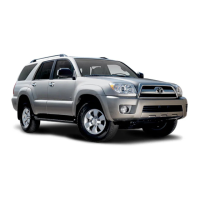
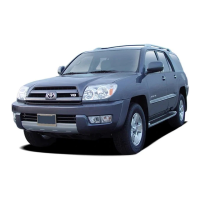
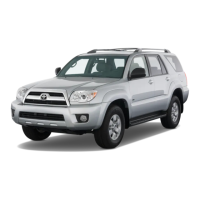
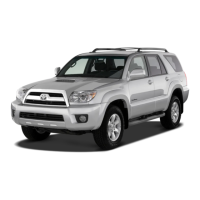

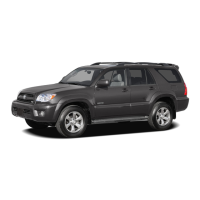
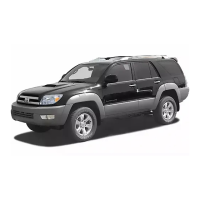
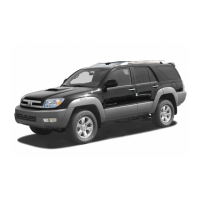
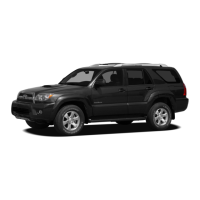
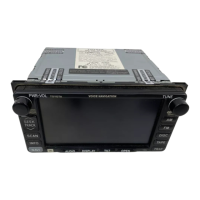
